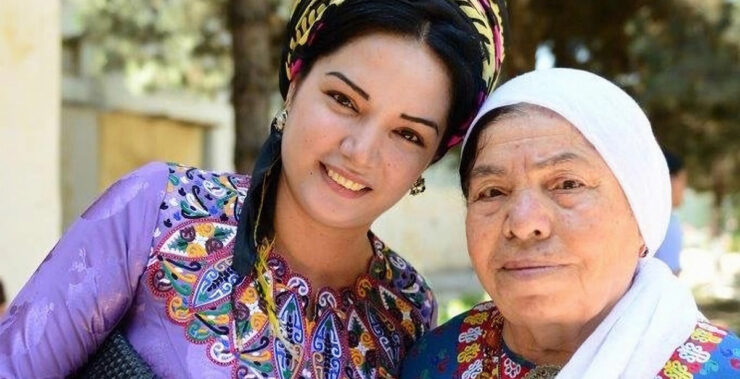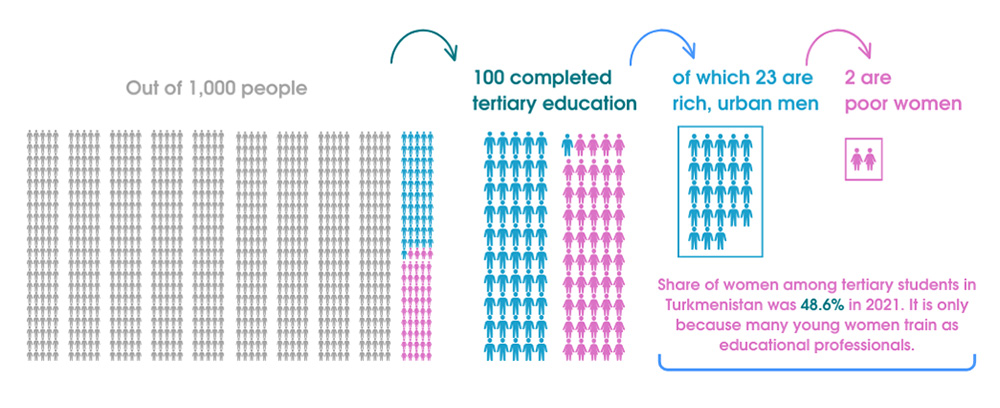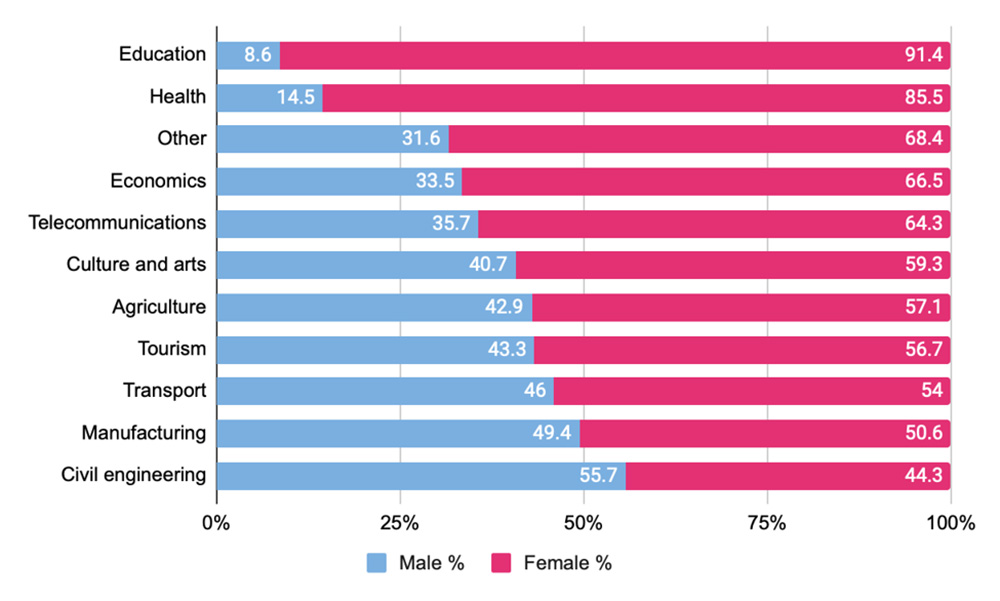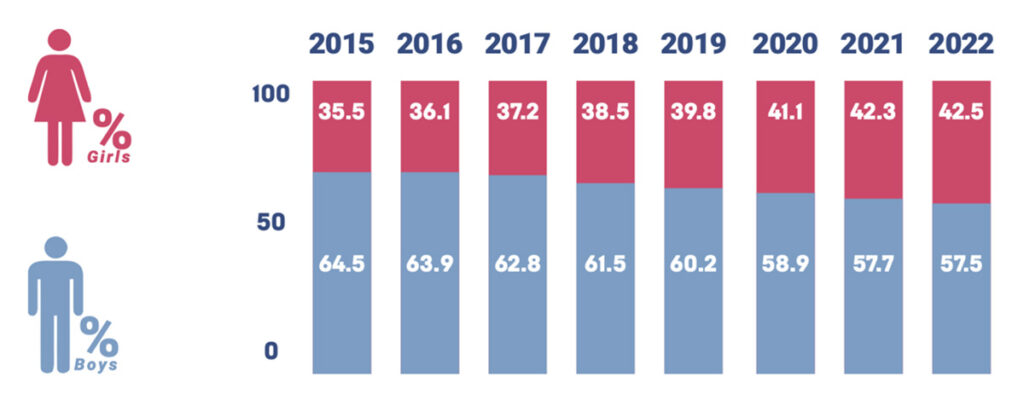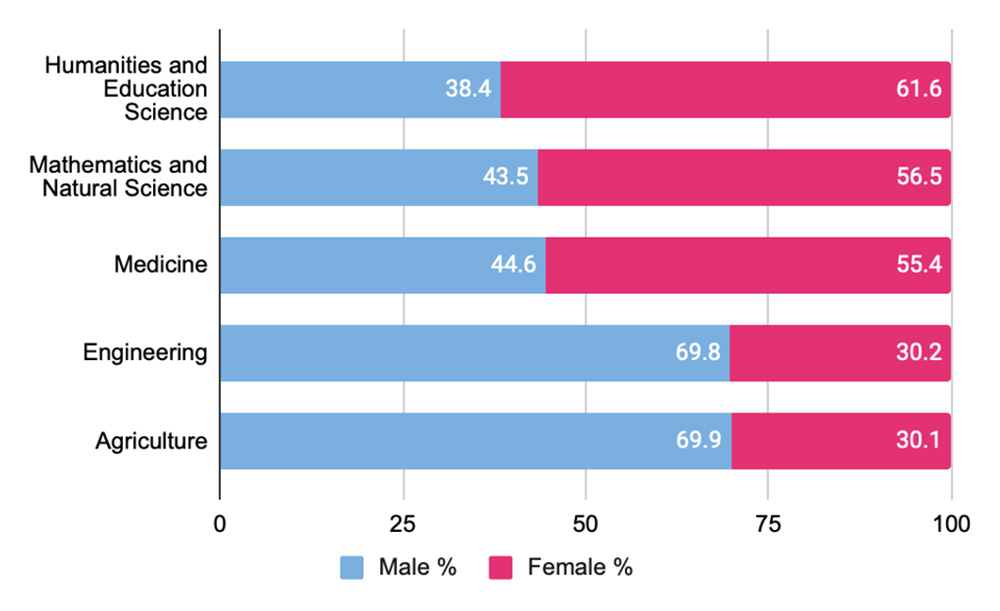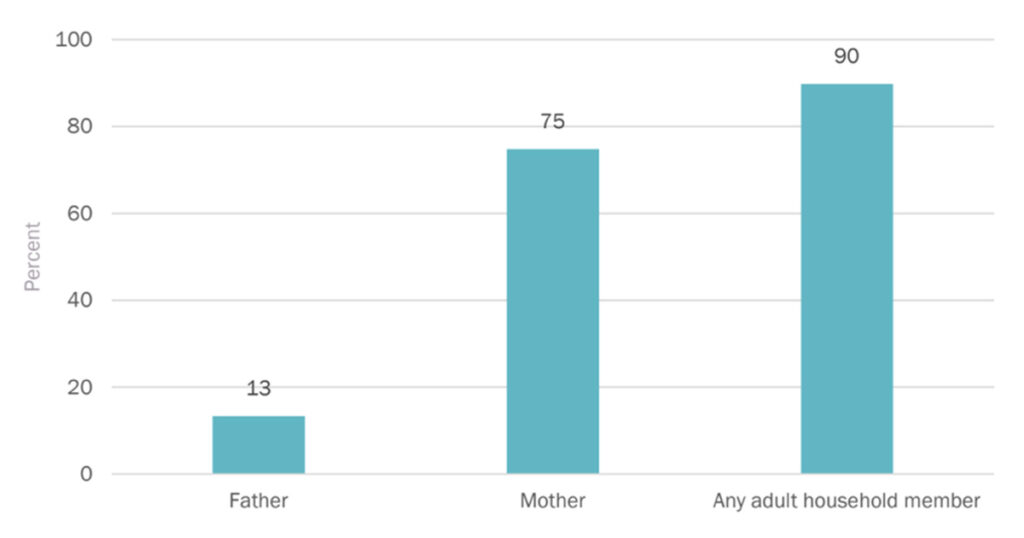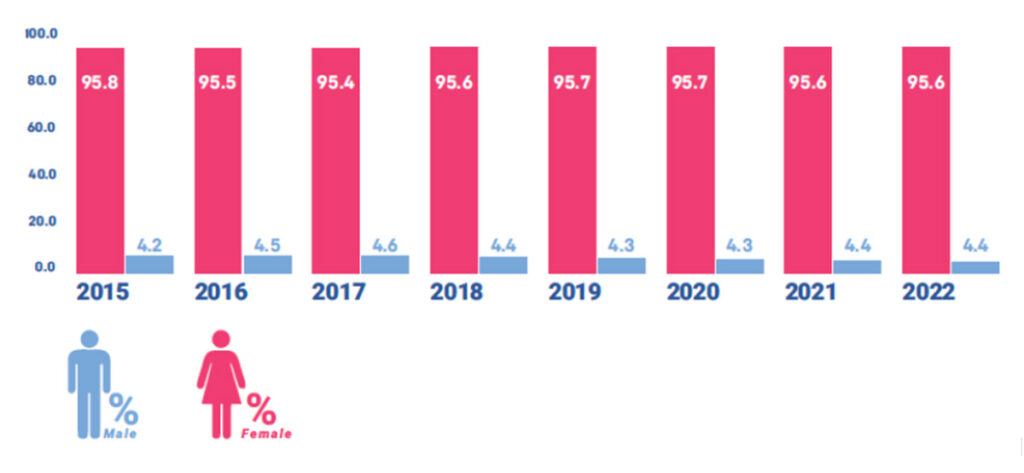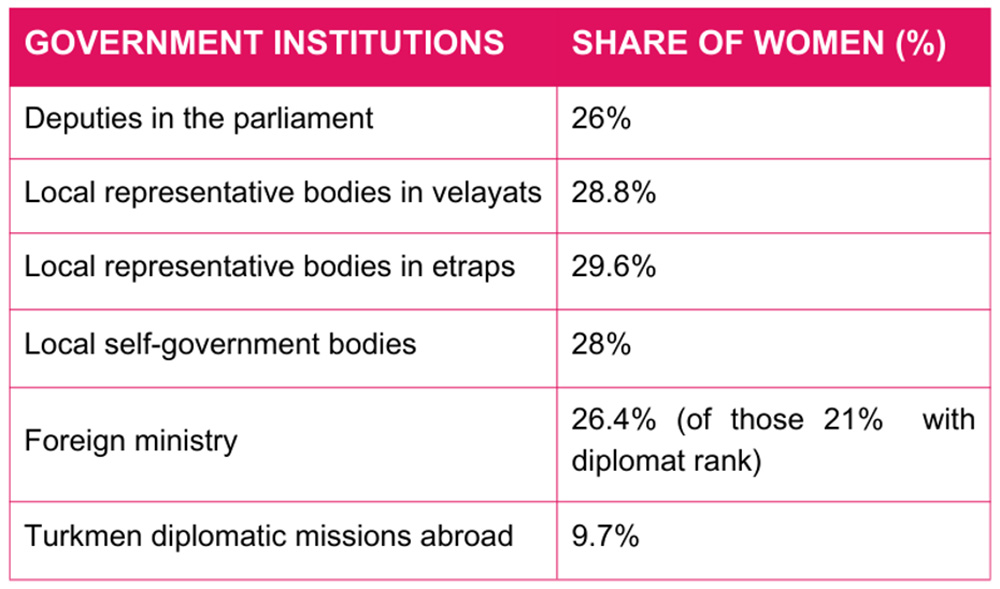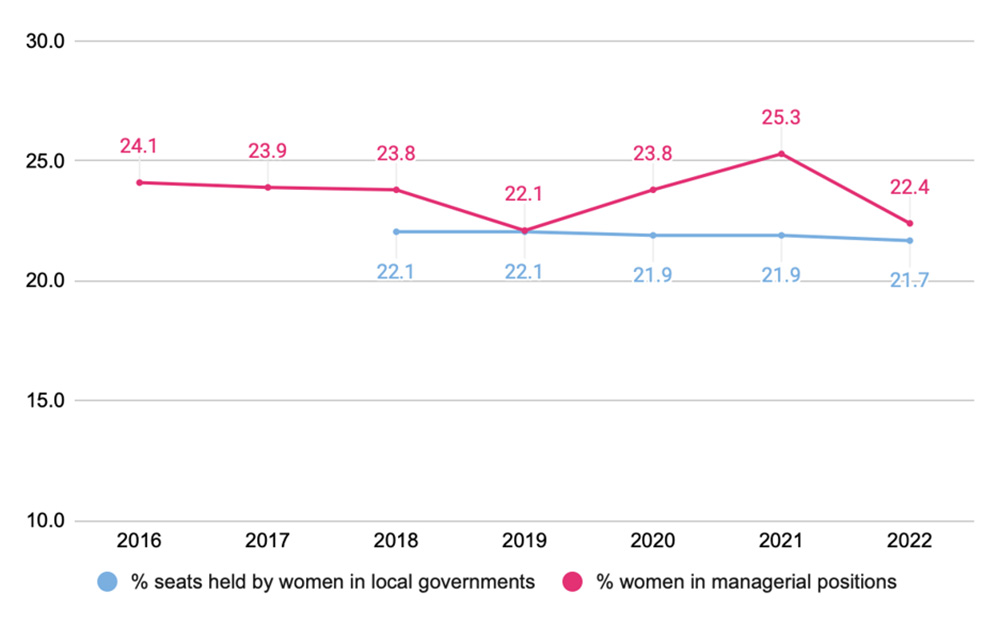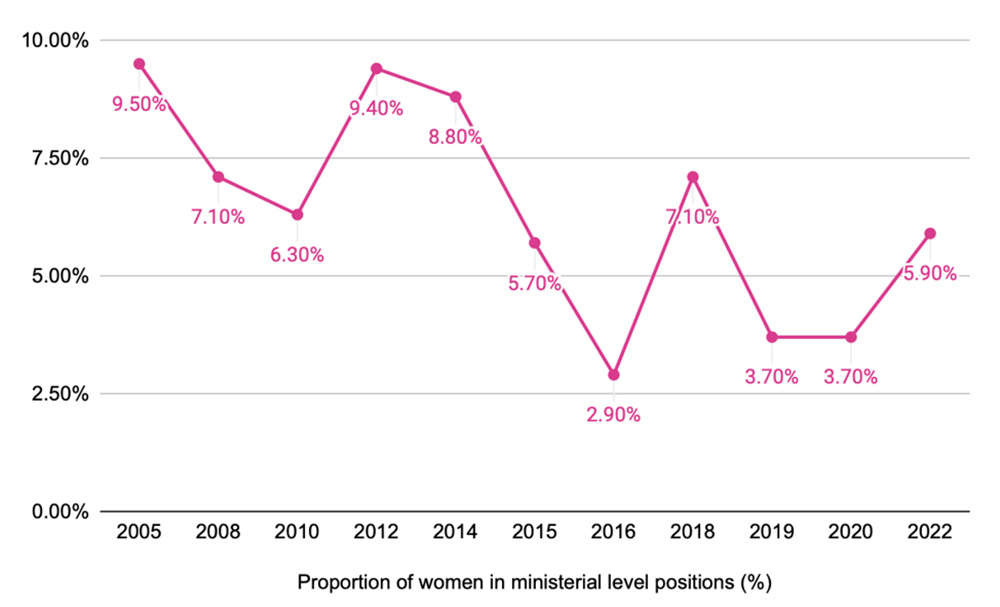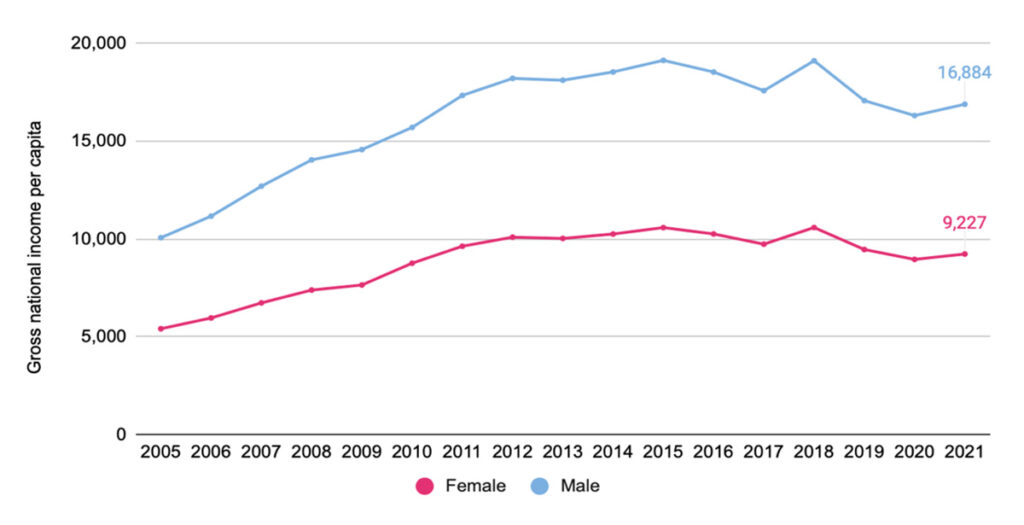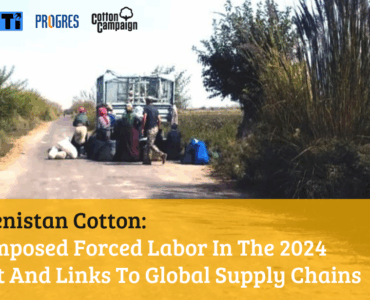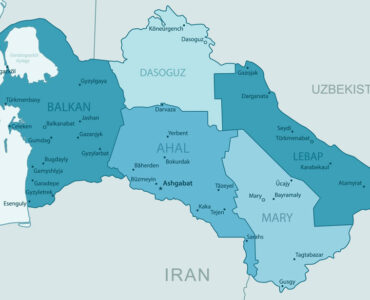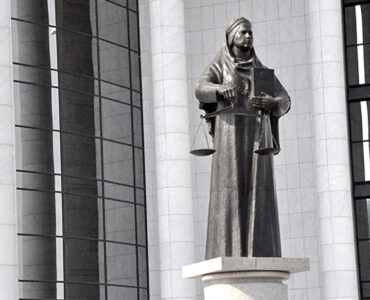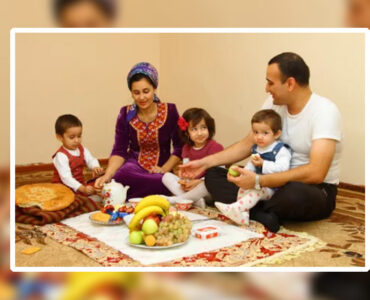Source: MICS 2019.
Summary: While girls and boys in Turkmenistan are born equal, they grow up to unequal opportunities due to unfavorable cultural norms, societal expectations and government policies. The status of women in Turkmenistan has not meaningfully improved over the last 31 years. Women’s positions in local governments, ministerial level positions, leadership roles and academia have been fluctuating with tendencies towards decreasing numbers. Only 4 out of 100 ministerial level positions are held by women. Fewer women participate in paid employment, have an account at a financial institution and earn roughly half of what men make. Institutional barriers that limit women and girls’ rights and freedoms have also permeated their private lives. No significant improvements were achieved in early marriage and access to family planning and contraception. Less than half of women make their own informed decisions about sexual relations and reproductive health. In the absence of tailored government intervention, these trends will continue to rob the girls and women in Turkmenistan of their opportunity to learn, to develop and to engage with their own future and the future of their country in meaningful ways.
Human development is about giving equal opportunity to everyone, regardless of their gender, race or ethnicity, to grow and to be accomplished in all areas of their lives. However, gains in human capital of women and girls remain untapped as their situation stagnates in Turkmenistan. This article presents how human development is unequally distributed among men and women. Due to unequal access to opportunities, disadvantageous social norms and lack of meaningful policy interventions women still lack voice, agency and decision-making power, both in public and private life. In order to turn human capital investments into meaningful economic gains, the government of Turkmenistan should ensure women and girls have equal rights and opportunities to pursue and fulfill their potential.
There are two ways to examine the level of human development of women and girls. First, the Gender Development Index (GDI) measures gender gaps in life expectancy, education and income. Women in Turkmenistan score 0.726 on the Human Development Index (HDI), which is lower compared to men at 0.760. The gap in human development among women and men is the largest in Akhal and Mary while smallest in Lebap and Dashoguz regions.
Second, the Gender Inequality Index (GII) measures the loss in human development due to inequality between female and male achievements in reproductive health, empowerment, and labor market. Turkmenistan has a GII value of 0.177, ranking 43 out of 170 countries in 2021. This article consults both of these indexes along with various other sources such as Human Development Reports, the World Bank, UN Women, UNFPA, UNESCO, ILO, USAID, Progres Foundation, the International Women’s Rights Action Watch, Voluntary National Reviews of Turkmenistan (2019, 2022), SDG portal of the State Committee of Statistics, MICS (2006, 2015, 2019) and independent and national media.
Word of caution regarding the data. While the official statistics shared by the government of Turkmenistan are commonly mistrusted as inaccurate and incomplete, the data collected from the international organizations often differ even for data on similar indicators – e.g. population size, adolescent fertility rate, employment statistics, etc.
Fewer women have access to tertiary education than men
Women and girls in Turkmenistan do not enjoy equal access to education. In expected and mean years of schooling Turkmenistan and Tajikistan have the largest difference between women and men in Central Asia. In Turkmenistan the average years of schooling for men is 11.6 years while for women it is 10.9 years. Inequality in education among women and men is the biggest in Mary and Balkan and the smallest in Akhal and Dashoguz regions.
More women study at mid-level professional schools than men in Turkmenistan. In the 2019-2020 academic year girls made up 3 out of the 5 students enrolled in secondary vocational training institutions. According to UNESCO in 2022 women accounted for 64.3% of enrollments at vocational schools in Turkmenistan compared to 35.7% of men.
In vocational schools women predominantly specialize in education and healthcare, the two low paid professions in Turkmenistan. For example, 9 out of 10 students specializing in education are women (see Figure 1). As a result, women account for 82.3% of primary school teachers in Turkmenistan (2020).
Figure 1. Gender distribution of students at mid-level professional education institutions by specialty, 2020-2021 academic year.
Source: SDG 4: Quality Education.
In contrast, fewer women study in universities than men. The share of girls studying in higher vocational training institutions was 42.5% in 2022. This means, out of 10 university students only 4 were women. As shared below, this high share of female students is mainly driven by women pursuing degrees in education and healthcare. There is also a cultural explanation for this gap. Parents, particularly in poor households, tend to invest more in their son’s education as they are seen as future breadwinners in their families. Meanwhile, daughters are expected to be taken care of by their future husbands.
Figure 2. Ratio of girls to boys in higher vocational training in Turkmenistan
Source: Voluntary National Review of Turkmenistan.
The gap between women and men enrolled in tertiary education has shrunk in Turkmenistan overtime. In 2019 women accounted for 11.8% and men for 14.1% of enrollment in tertiary education, while in 2022 it reached 18.2% for women and 18.3% for men. In comparison, 68.8% of women and 57.4% of men are enrolled in tertiary education in upper-middle income countries and 85.8% women and 72.2% of men in Europe and the Central Asia region. This drastic difference in access to tertiary education reflects poor development opportunities, both for women and men in Turkmenistan, and the limited priority the government gives to education compared to countries with similar economic resources.
Similar to vocational schools, in higher education women primarily pursue professions in education and healthcare, while a greater number of men specialize in engineering and agriculture.
Figure 3. Gender distribution of students at higher education institutions by specialty, 2020-2021 academic year Turkmenistan
Source: SDG 4: Quality Education.
Women are misrepresented in the labor market
Many economically active women in Turkmenistan are unemployed or underemployed. There might be several reasons for this including women’s level of education, involvement in unpaid work, early marriage and early childbearing along with societal expectations. For example, women are involved in unpaid work such as caring for children, elderly and sick family members, more than men. To illustrate, in 2019 in the total number of domestic workers, women accounted for 91.4%. The number of women housewives is 9 times more than that of men and they do 2.5 times more household chores than men. Mothers were almost six times more likely than fathers to engage in 4+ activities with their child that promote learning (see Figure 4). This impacts women’s ability to pursue paid employment and advance their professional careers. As the data for Europe and Central Asia from ILO illustrates, women with children are far less likely to be employed than men, 59% vs 77%, respectively.
Total unemployment indicates that for every 100 unemployed men in Turkmenistan, there are approximately 54 unemployed women. This low rate of unemployment among the female workforce may be because they are not actively searching for employment, which is a prerequisite for being counted as ‘unemployed’.
In labor force participation among women, Turkmenistan has the second worst performance after Tajikistan where only 36.5% of women participate in the labor market compared to 55.6% of men in 2021. Not surprisingly this affects employment prospects for women as in 2019 only 50% of women were employed in contrast to 74% of employed men.
Figure 4. Percentage of children age 2-4 years with whom the father, mother or adult household members engage in activities that promote learning and school readiness during the last 3 days
Source: MICS 2019.
*Note: Activities include: reading books, telling stories, singing songs to the child; taking the child outside the home; playing, naming, counting or drawing things with the child.
Although vulnerable employment for women in Turkmenistan has improved since 1991, it remains higher for women than for men, 28.42% and 24.38% respectively (2021). This means, more than 1 in 4 employed women are unlikely to have formal work arrangements, social protection, and safety nets to guard against economic shocks which puts them at a higher risk for falling into poverty.
In terms of sector of employment more women work in services (51.09%) compared to men (34.68%), while more men are employed in industry (44.07%) than women (25.65%). Women account for 73.9% of healthcare workers. Likewise, teachers in Turkmenistan are primarily made of women. In the 2021-2022 academic year, women accounted for 95.6% of the teachers in pre-primary institutions, 82.8% in primary schools and 61.8% in secondary schools.
Figure 5. Ratio of teachers in pre-primary institutions of Turkmenistan by sex
Source: Voluntary National Review of Turkmenistan.
Women do not have equal access to land as men. In 2022, women received 901 out of 4,616 land parcels allocated to the members of the Union of Industrialists and Entrepreneurs of Turkmenistan (UIE) to produce agricultural products. In other words, women received approximately one-fifth of the land parcels allocated to men.
Women are also misrepresented in the private sector. In 2021 women accounted for 42.5% of employees in large and medium-sized enterprises while only 22.4% of women held managerial positions in 2022. The share of women entrepreneurs was 32.5% in 2022 and 22.4% in 2023.
Fewer women are in decision making positions
Women in Turkmenistan lack representation and decision-making power. Men hold 3 times as many seats in the national parliament as women and almost 5 times as many seats in Halk Maslahaty or People’s Council (2022).
Figure 6. The share of women in various government institutions in Turkmenistan
Source: Turkmen Delegation’s Presentation at CEDAW.
The proportion of women in local governments and leadership roles has not improved in recent years. For example, in 2018 the proportion of seats held by women in local governments was 22.1% while in 2022 it dropped to 21.7%. Similarly, the proportion of women in managerial positions dropped from 24.1% in 2016 to 22.4% in 2022.
Figure 7. Proportion of seats held by women in local governments and in managerial positions in Turkmenistan
Source: TurkmenStat.
Moreover, the proportion of women in ministerial level positions in Turkmenistan has dropped from 9.5% in 2005 to 5.9% in 2022. This is the second lowest share in Central Asia after Uzbekistan. In contrast, Tajikistan, the best performer in the region, has 14.3% of women in ministerial level positions.
Figure 8. Proportion of women in ministerial level positions (%) in Turkmenistan
Source: World Bank.
Women are also misrepresented in academia. The share of women as academic staff at tertiary education institutions has decreased from 50.1% in 2014 to 47% in 2023.
Women earn less money than men
While women’s income almost doubled from 2005 to 2021 and it increased more than men’s, men still earn 1.83 times more than women do, and this difference persists overtime. In 2021, on average, women made USD 9,227 while men earned USD 16,884. Income inequality among men and women are somewhat similar across all regions with Ashgabat having the largest gap.
Figure 9. Gross national income per capita in Turkmenistan by gender
Source: Gender Development Index.
In addition to the economic and educational reasons that keep women in low-level and low-income positions, women’s wages were 12.2% lower than men’s wages in the overall economy in 2022. The gender pay gap was as high as 32% in the extractive industries and 22.5% in retail and wholesale. Average monthly salary remains lower for women than for men in almost all economic sectors, even when both are employed in the same category. Women earn from 69.6% of men’s salary in the public administration and defense sector, to 95.1% of men’s salary in the education sector. Although the constitution of Turkmenistan guarantees equal pay for work of equal value to women and men, this situation remains unchanged. According to the government of Turkmenistan, women are still concentrated in sectors such as manufacturing, healthcare, social services and education, while men primarily work in extractive industries, electricity and gas, construction and transport, which are industries providing employees with various pay supplements and allowances.
Committee of experts at ILO notes that the gender pay gap in Turkmenistan is not only due to “women’s educational attainment and length of career but also due to division of positions into traditionally “female and male jobs” and stereotypical assumptions regarding women’s aspirations and capabilities. This results in the undervaluation of “female jobs” compared to those of men. Certain types of work in sectors with a high proportion of women are being undervalued in comparison with sectors in which men are predominantly employed.
Women live longer than men but experience more health challenges
Women in Turkmenistan live, on average, 6.8 years longer than men. However, women are more likely to suffer from disabilities and fall under vulnerable groups of the population. There are 94.2% of women among persons with severe disabilities collecting disability social protection benefits compared to 81.2% of men in 2021. Similarly, 13.2% of women are among vulnerable persons covered by social assistance compared to 1.9% of men. One in three women ages 15+ are living with HIV in Turkmenistan (2021).
Child delivery still involves life threatening risks for women and their children. In Turkmenistan 7 women die per 100,000 live births due to pregnancy-related causes, which is the lowest rate in Central Asia. However, infant and child mortality in Turkmenistan are among the highest in the world. Out of 1,000 children in Turkmenistan 39 die before reaching the age of 1 and 46 die before reaching the age of 5. Such unfortunate events negatively impact mothers’ health and wellbeing.
Women lack decision maker power within their households. For example, of financial and other decisions in the households 76% are made by men and 24% by women. The share of women (age 15+) who have an account in a financial institution is 35.5% compared to 45.7% of men. In comparison, 83.6% of women in Kazakhstan have an account in a bank. A man in Turkmenistan is 1.7 times as likely to have used the internet to pay bills or to buy something online in the past year (2017).
Women in Turkmenistan lack agency to make decisions impacting their health and wellbeing. 50% of women do not have access to contraception, and nearly 60% of women feel unable to make autonomous decisions on issues like healthcare, contraception, and giving consent to sex. In fact, the use of contraception (any method) in Turkmenistan has decreased over time, from 61.8% in 2000 to 49.7% in 2019. In 2022 the government had made public a law restricting abortion access from 12 weeks to just 5 weeks which was secretly passed back in 2015 without any public consultation or knowledge. This has made abortion illegal and an unsafe option for many women while putting their health and economic status at risk.
For 1 in 10 married women their need for family planning is not met despite previously having an unwanted or mistimed child birth. The lack of family planning is higher for women in the age group between 15-19 years (89%), in rural areas (54%), in the poorest quintile (53%) and women with only primary or secondary education level (51%).
Similarly, early marriage and early childbearing persist among girls in Turkmenistan limiting their economic empowerment. According to MICS there has been no significant improvements in early marriage. For example, the percentage of young women aged 15-19 years who are married or in union was 5.1% in 2006, 6.0% in 2016 and 4.8% in 2019 indicating lack of improvement. Early marriage varies by region, from 1.4% in Mary to 7.8% in Lebap province in 2019. Moreover, out of 1,000 girls (ages 15-19) in Turkmenistan 27 gave birth to their first child in 2023. In fact, the rate of adolescent fertility in Turkmenistan has fluctuated slightly but overall remained roughly the same since the early 1990s.
With limited bodily autonomy, women and girls are subject to sexual and gender-based violence, virginity tests, forced marriages and prohibited from obtaining a driver’s license. According to the first national report on domestic violence against women 58% of women aged 15-49 believe their husbands have the right to beat them for violating the restrictions and obligations imposed by their spouse. The most common form of spousal control is preventing women from leaving the house without permission and working or studying outside the home. 41% of women have encountered at least one type of controlling behavior from their partner in their lives.
According to the first ever social media listening project by Progres Foundation women and girls in Turkmenistan also face violence online. Content encouraging violence against women and girls accounted for 18% of posts and comments on social media in 2022, an increase from 2.8% in 2021 and 10% in 2020. The two topics that dominated conversations include hate speech against women and gender roles. Hate speech accounted for over a quarter of the conversations during 2020-2022.
Turkmenistan lacks laws, mechanisms and national programs to prevent domestic violence and sexual harassment. Government agencies do not provide any statistics related to women’s health and gender equality. Meanwhile, the government promotes the pro-natalist messages of eight-child families through the national media, further reinforcing the role and value of women only for their capacity to give birth, raise healthy children and thus preserve traditional family values.
As the UNFPA study in 2021 found, investments to expand coverage and the contraceptive choices for women and girls in Turkmenistan will prevent more than 680,000 unintended pregnancies and 22,500 unsafe abortions. This will save more than $87,5 million for the national budget in Turkmenistan till the end of 2030 while also supporting the well-being of many women. The research shows that every dollar invested in family planning yields more than $7 in financial returns for the public health system, in addition to empowering women to lead healthier and more productive lives. When women and girls are able to make the most fundamental choices about their bodies, they gain autonomy along with benefits in health and education, income, economic and employment opportunities and safety. These contribute to greater justice and human well-being, which benefits everyone in Turkmenistan.
Recommendations to the government of Turkmenistan
There is a lack of steady and meaningful improvements in the lives of women and girls, which shows inconsistency in the work of the government. In the light of restrictive laws on reproductive rights any improvements achieved can be simply lost. Institutional barriers that limit women and girls’ agency, autonomy and decision-making power perpetuates into their private lives where women and girls are unable to make fundamental decisions impacting their health, welling and economic prospects. The patriarchal culture, harmful traditions, government inaction and absence of public education and communication reinforces this vicious cycle that robs women and girls of their fundamental rights and freedoms. The government of Turkmenistan should make gender equality a top national priority by implementing policies including but not limited to the following:
Adopt and enforce relevant laws:
- Adopt and enforce laws against domestic and gender-based violence, harassment, discrimination and equal pay, ensuring that they are comprehensive, adequately funded, and regularly updated.
- Make abortion legal and accessible to all women by repealing the 5-week gestational age limit and allowing women in Turkmenistan to access abortion care up to 12 weeks so women have enough time to realize and respond to their pregnancy and make their independent decisions about their body and health.
Collect and monitor relevant data:
- Collect data and monitor progress by establishing comprehensive and disaggregated data collection on gender equality, regularly assess the impact of policies and programs to ensure effectiveness and make necessary adjustments.
- Conduct nationwide awareness raising campaigns to challenge stereotypes, preconceived gender roles, address unconscious biases, and promote gender equality and sexual and reproductive health education.
- Monitor and regulate media content to eliminate harmful stereotypes and portrayals of women, promote positive portrayals of women in media and leverage technology for gender equality initiatives, such as online education and support services.
Improve support services:
- Support victims of gender-based violence by strengthening support services, including shelters, counseling, and legal aid, training law enforcement and judiciary officials on handling cases of gender-based violence sensitively and efficiently.
- Ensure affordable and accessible healthcare services including sexual and reproductive health services, modern contraceptives and family planning for all women, promote awareness of women’s health issues and destigmatize seeking healthcare for reproductive health, mental health, and other related concerns.
Eliminate barriers in social, economic and political life:
- Develop and implement sexual and reproductive health education and gender-sensitive curricula in schools that promote equality, respect, and understanding.
- Eliminate barriers to higher education for girls, including addressing financial constraints, cultural stereotypes and creating a safe and inclusive learning environment.
- Improve women’s political participation by implementing affirmative action policies to increase women’s representation in political and decision-making roles, and providing training and support programs to encourage women to participate in political processes at all levels.
- Improve employment opportunities for women by enforcing anti-discrimination policies in the workplace, establishing mechanisms to address complaints, encouraging and incentivizing businesses to adopt flexible working arrangements, parental leave policies, and childcare facilities to support work-life balance, implementing programs that provide financial literacy, entrepreneurship training, and access to credit and land for women.
- Eliminate gender pay gap by implementing International Labour Organisation’s recommendations including – taking measures to address the underlying causes of the existing gender wage gap, such as gender-based discrimination, gender stereotypes relating to aspirations, preferences and abilities of women, or vertical and horizontal occupational segregation, and promoting women’s access to a wider range of job opportunities at all levels.
This is the third article in a series examining human development in Turkmenistan. The previous articles looked at Turkmenistan’s performance on the Human Development Index and the government spending on education and healthcare.
Image: UNFPA

